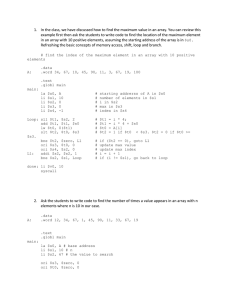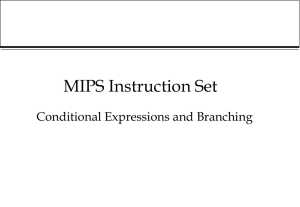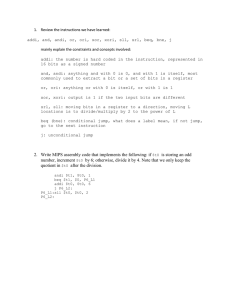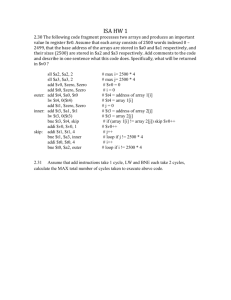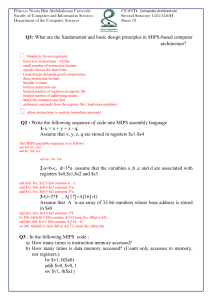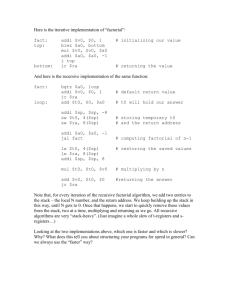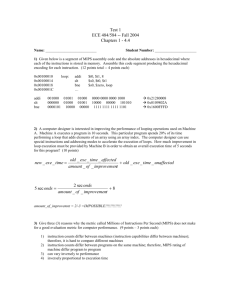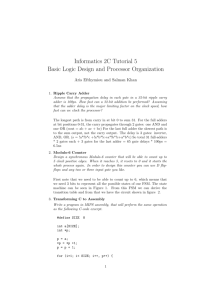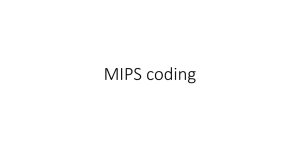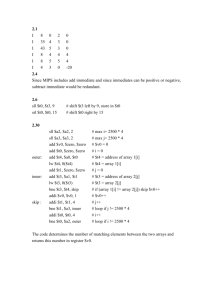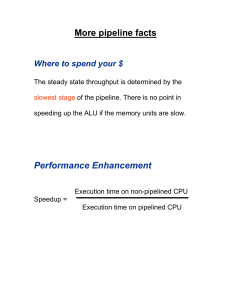HW3
advertisement
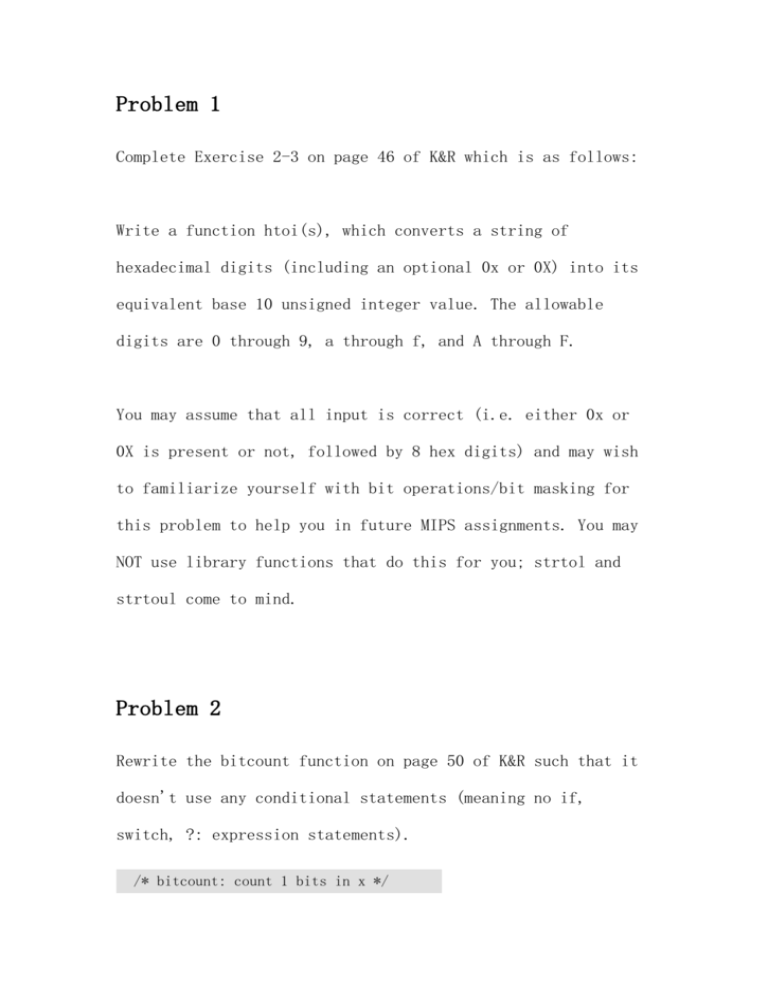
Problem 1
Complete Exercise 2-3 on page 46 of K&R which is as follows:
Write a function htoi(s), which converts a string of
hexadecimal digits (including an optional 0x or 0X) into its
equivalent base 10 unsigned integer value. The allowable
digits are 0 through 9, a through f, and A through F.
You may assume that all input is correct (i.e. either 0x or
0X is present or not, followed by 8 hex digits) and may wish
to familiarize yourself with bit operations/bit masking for
this problem to help you in future MIPS assignments. You may
NOT use library functions that do this for you; strtol and
strtoul come to mind.
Problem 2
Rewrite the bitcount function on page 50 of K&R such that it
doesn't use any conditional statements (meaning no if,
switch, ?: expression statements).
/* bitcount: count 1 bits in x */
int bitcount(unsigned x)
{
int b;
for (b = 0; x != 0; x >>= 1) {
if (x & 01) {
b++;
}
}
return b;
}
Problem 3
Complete Exercise 6-5 on page 145 of K&R. All the code from
section 6.6 is provided in hash.c already, with some quick
test code around it. Just fill in the blank for the undef
function definition -- remember to free the appropriate
malloc'd space used and to correctly deal with deleting a
node from a linked list (i.e. the next pointers). The return
values are there for you to use (return values of 0 and 1 are
straightforward and -1 if you feel like you need it).
The relevant reading is available here if you don't have the
book: Chapter 6.6
Some test input you may try with hash.c:
the sky is blue
I hate apples!
I procrastinated on CS61C proj1
Compile the program and run using the following command:
$ gcc -g hash.c && ./a.out
Problem 4
P&H 2.29 (2.3, 2.6, 2.9) and write the C equivalent:
Add comments to the code and describe in one sentence what
this code does. Assume that
$a0
and
$a1
are used for input and both initially contain the
integers a andb, respectively. Assume that
$v0
is used for the output.
Also, convert this MIPS code to C (you may find it easier to
understand if you do this first!).
loop:
finish:
add
$t0, $zero, $zero
beq
$a1, $zero, finish
add
$t0, $t0, $a0
sub
$a1, $a1, 1
j
loop
addi
$t0, $t0, 100
add
$v0, $t0, $zero
Problem 5
P&H 2.30 (2.3, 2.6, 2.9) and write the C equivalent:
The following code fragment processes two arrays and produces
an important value in register
$v0
. Assume that each array consists of 2500 words indexed 0
through 2499, that the base addresses of the arrays are
stored in
$a0
and
$a1
respectively, and their sizes (2500) are stored in
$a2
and
$a3
, respectively. Add comments to the code and describe in one
sentence what this code does. Specifically, what will be
returned in
$v0
?
Also, convert this MIPS code to C (you may find it easier to
understand if you do this first!).
sll
$a2, $a2, 2
outer:
inner:
skip:
sll
$a3, $a3, 2
add
$v0, $zero, $zero
add
$t0, $zero, $zero
add
$t4, $a0, $t0
lw
$t4, 0($t4)
add
$t1, $zero, $zero
add
$t3, $a1, $t1
lw
$t3, 0($t3)
bne
$t3, $t4, skip
addi
$v0, $v0, 1
addi
$t1, $t1, 4
bne
$t1, $a3, inner
addi
$t0, $t0, 4
bne
$t0, $a2, outer
Problem 6
Show the single MIPS instruction or minimal sequence of
instructions for the following C statements:
b = 25 | a;
x[4] = x[5] + a;
Assume that
a
corresponds to register
$t0
and
b
corresponds to register
$t1
.
Assume that
a
corresponds to register
$t3
and the array
x
has a base address of 6,400,000ten.
Problem 7
Lets try another MIPS->C question. In this problem,
$a0
is an integer argument while
$a1
is a pointer to (ie: the address of) a large array. The
value in
$a0
can be any integer and the size of the array that
$a1
points to is big enough (as long as you don't dereference
memory before $a1, you won't be accessing memory that isn't
yours) for the code to work correctly.
The instructions are the same as before: add comments to the
code and then briefly explain what it does. Specifically,
what is in the array as the function returns?
Translate the following code into C:
loop:
done
addi
$t1 $zero 31
addi
$t0 $zero 31
srlv
$t3 $a0 $t1
andi
$t3 $t3 1
addi
$t3 $t3 48
sub
$t4 $t0 $t1
add
$t2 $a1 $t4
sb
$t3 0($t2)
beq
$t1 $zero done
subi
$t1 $t1 1
j
loop
sb
$zero 1($t2)
jr
$ra
